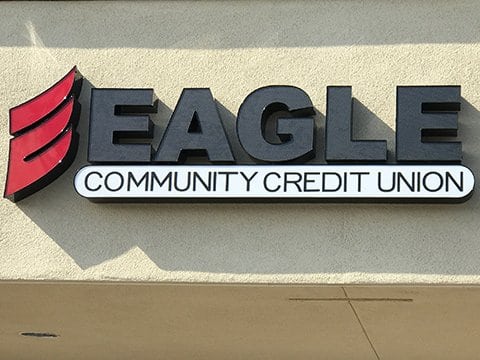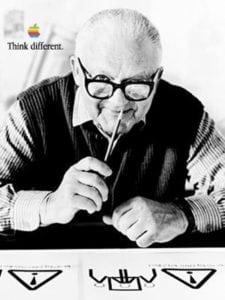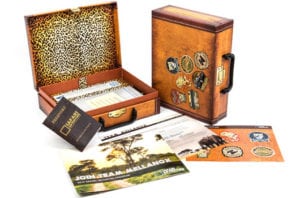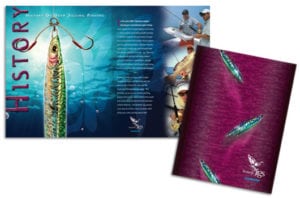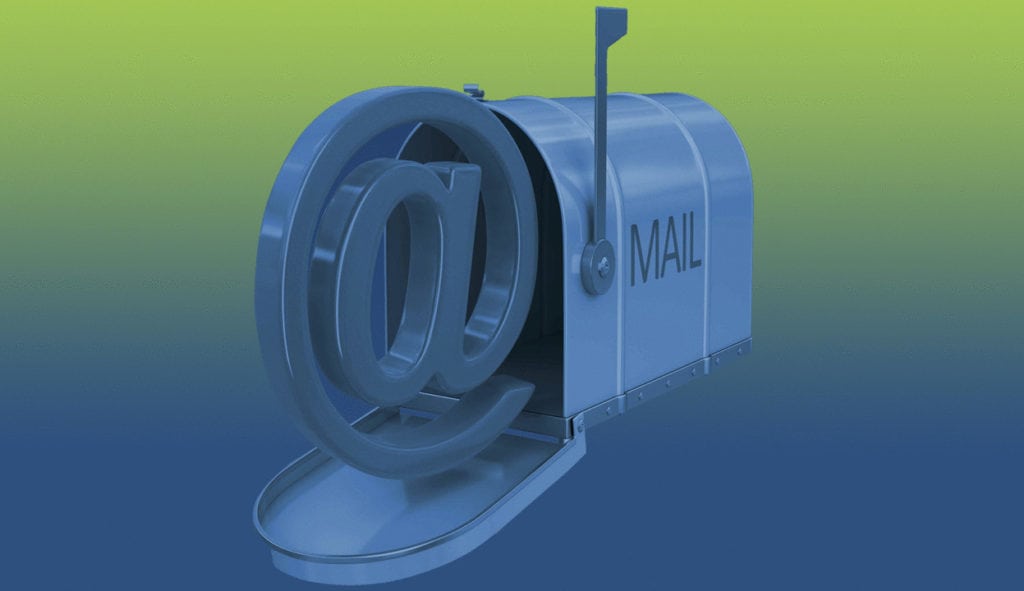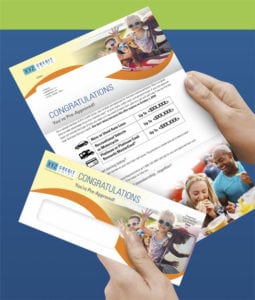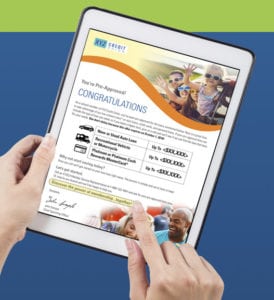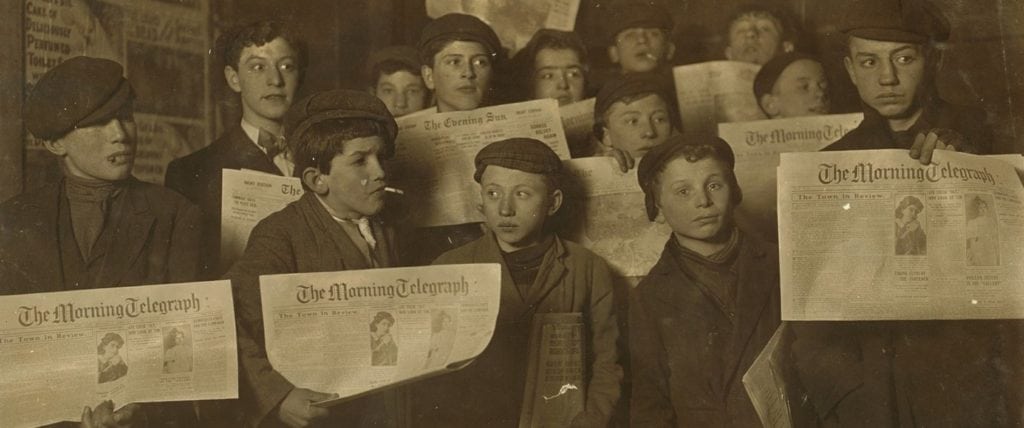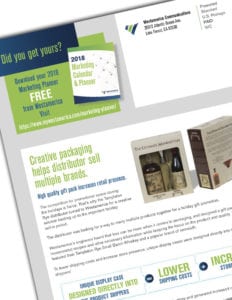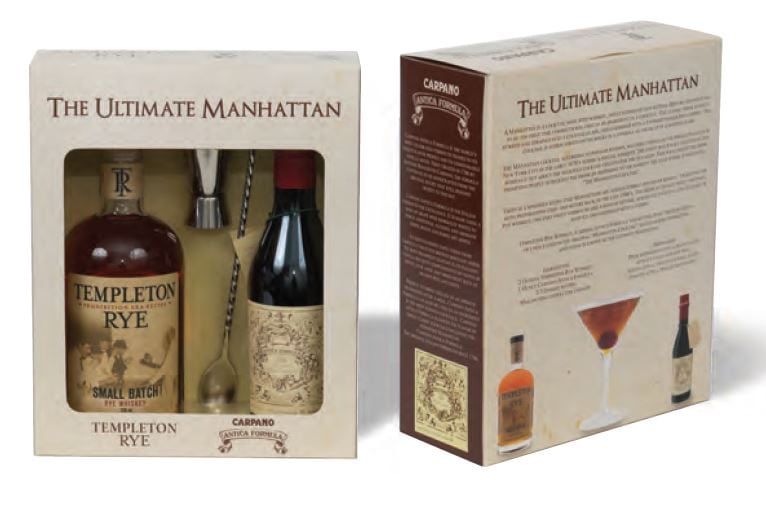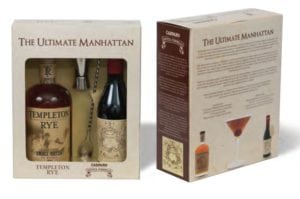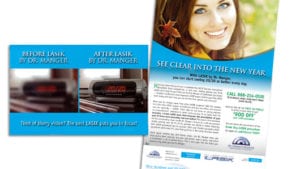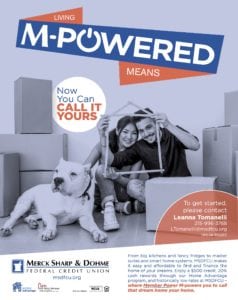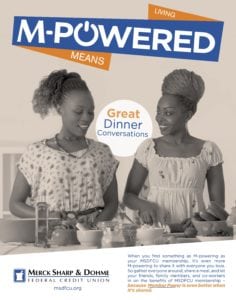
 Title III of the ADA prohibits discrimination based on disability
Title III of the ADA prohibits discrimination based on disability
The ADA was originally built to create compliance for the physical world — buildings, sidewalks, and restrooms. However, with the growth of web-based retailing, the ADA is now being expanded to include accessibility to websites and the digital world. Just as a physical building can be difficult to navigate for a disabled person, a website can have barriers too.
Today many marketing content creators fail to consider the blind and deaf, or simply those that cannot use a mouse to navigate their websites. Today many disabled persons use “assistive technology,” such as screen readers or voice recognition software and designers should be mindful of how those tools will interpret their site.
Depending on your business, you may be affected by this changing legislation.
How do I comply with ADA standards?
 Simple adjustments in your content can make it more accessible for the disabled. The ADA requirements for websites are currently evolving as the law has not been firmly established.
Simple adjustments in your content can make it more accessible for the disabled. The ADA requirements for websites are currently evolving as the law has not been firmly established.
While the government is finalizing rules to make and enforce accessibility in websites, the ADA encourages the use of the Web Content Accessibility Guidelines 2.0 (WCAG) as a guide on how to make your site accessible.
WCAG 2.0 was published in December, 2008 and became an official international standard for website accessibility in 2012. These guidelines were first established in 1999 through the work of Web Accessibility Initiative (WAI) and the World Wide Web Consortium (W3C).
WCAG is organized as 12 guidelines under 4 principles (POUR):
Perceivable: Web content is made available to the senses – sight, hearing, and/or touch
Operable: Interface forms, controls, and navigation are operable
Understandable: Content and interface are understandable
Robust: Site should work in all environments
Below are some tips to help ensure you are ADA compliant
1) Add text to your images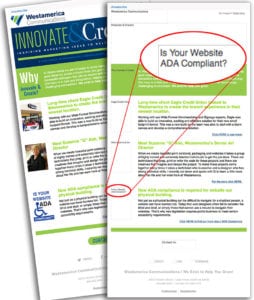
An image can say 1000 words, but what happens when you can’t see the image? A blind person will often use a screen reader when browsing the web. Without text being added to your image, their screen reader would not be able to identify the image. They would have no way of knowing if the image contains your logo, link to another page or if it was simply a stock photo.
As Example – your website may contain an image of your new location. A blind person should be able to use their screen reader to go over the image and hear “photo of new branch located at XXX”
2) Modify PDF’s to become reader friendly
Image based formats such as PDF’s can be challenging to the visually impaired. Make sure your PDFs are screen reader friendly, the images are tagged and ordered correctly.
3) Use color appropriately
Do not use color as the only means of conveying visual information, distinguishing visual components, indicating actions or prompting for a response.
4) Using video may require additional audio descriptions
If video is used in any of your marketing / online material, be sure to include audio descriptions of what is being displayed. Make sure the user has the ability to pause the video, control content in the case of blinking or scrolling information and turn on or off captions.
5) Provide alternate means of communication
Be sure to have a procedure in place to respond quickly to a website visitor with disabilities who is having trouble accessing your site. This could be a phone number to call, email address or text box allowing someone to request accessible service or information.
The checklist is not meant to be comprehensive but rather a guide of best practices.
You should always contact your compliance resource manager, or legal counsel if you have questions regarding ADA compliance.
Looking for help creating ADA compliant marketing material? Westamerica Communications can help, contact us today!

